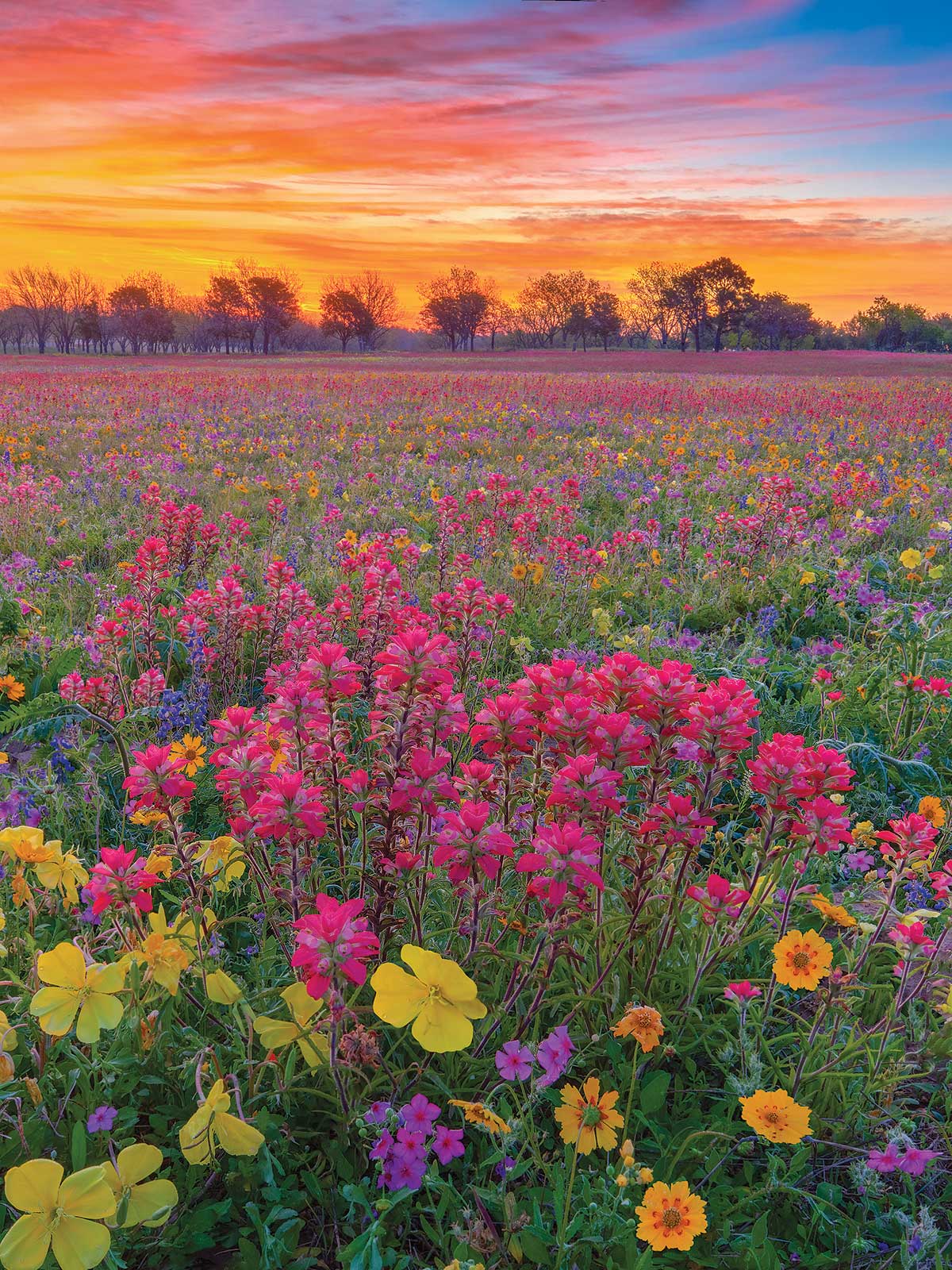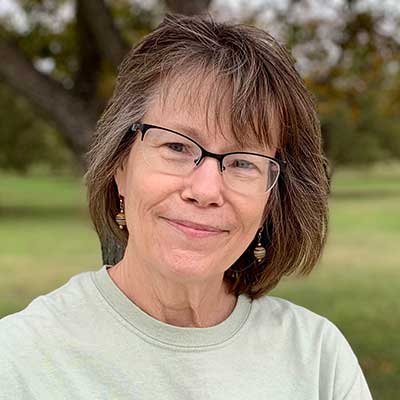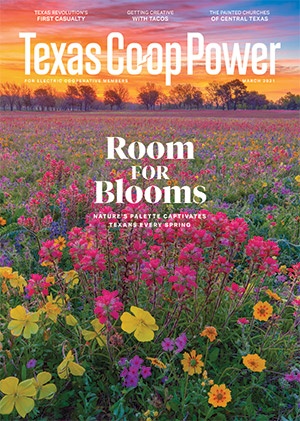Nature’s palette captivates Texans every spring. Sapphire blue, lemony yellow, crimson red, golden orange, lavender purple and ivory white. We love our wildflowers so much that we’ll drive great distances to see them. Frame their colors in countless photos. Designate official state titles in their honor. Celebrate their return with festivals, parades and dances. Spread their seeds across our yards, campuses and roadsides. Pen words, compose music and paint landscapes that hail their natural glory.
We also revere the Texans who’ve promoted our 5,000-plus species of wildflowers and native plants. Foremost was Lady Bird Johnson, who started her national highway cleanup campaign during Lyndon B. Johnson’s presidency and co-founded the National Wildflower Research Center in 1982. Now called the Lady Bird Johnson Wildflower Center, the 284-acre complex in Austin supports the Botanic Garden and Arboretum of Texas as well as cultivated gardens and wild natural areas.
Another wildflower hero is Carroll Abbott of Kerrville, a native plant expert who lobbied in 1981 to establish the fourth Saturday in April as Texas Wildflower Day. That same year he was instrumental in founding the Native Plant Society of Texas, which now boasts 34 chapters with 2,800 members.
Other wildflower advocates made a difference, too. San Antonio civic leader Sallie Ward Beretta launched a statewide campaign in the 1920s to stop the bluebonnet from being overpicked. As president of the City Federation of Women’s Clubs and the San Antonio Council of Girl Scouts, she recruited volunteers to gather seedpods in fields around the city. Then they shared the seeds with other cities across the state and nation.
Large or small, every effort to protect our wildflowers makes a difference. You can do your part: Please don’t pick, trample or uproot bluebonnets or any other wildflowers.
No law prohibits Texans from picking bluebonnets unless they’re on private property or state park land, but any flower picked or damaged can’t reseed for the next spring’s bloom.
So welcome back, wildflowers. We look forward to yet another glorious show!
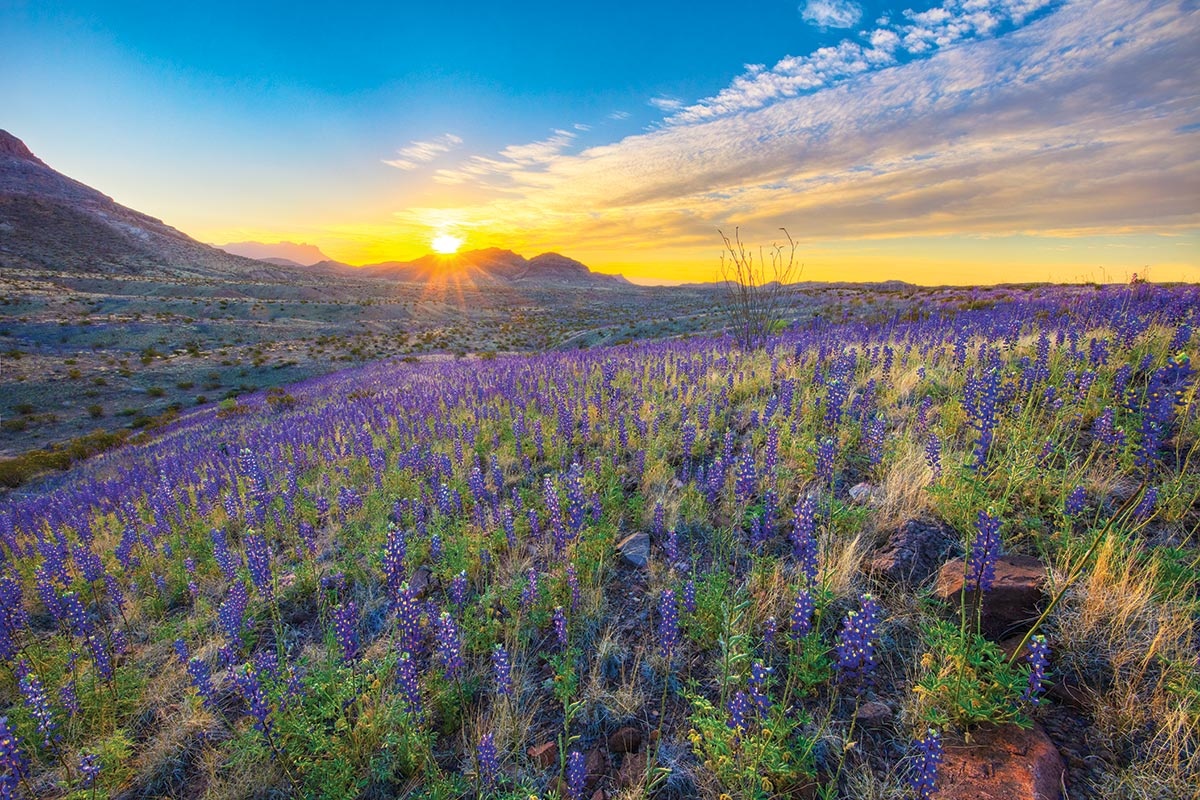
A field of bluebonnets in the southern Chisos Mountains welcomes the sun as it rises on Big Bend National Park.
Rob Greebon | Imagesfromtexas.com
Officially Wild
Well, I do declare! Official state designations
State Flower
Most U.S. states claim one official state flower. Not Texas. We have at least 16. In 1901 the bluebonnet (Lupinus subcarnosus) went up against the prickly pear and cotton boll for the right to be named state flower. Rep. John “Cactus Jack” Nance Garner of Uvalde lobbied for the cactus bloom. Other legislators argued that cotton had made Texas rich. In the end, the National Society of the Colonial Dames of America carried the day, and the bluebonnet won.
But floral dissent wasn’t over. Many didn’t like the bluebonnet choice. Of the state’s six bluebonnet species, Lupinus subcarnosus was the “least attractive,” opined botanist Howard S. Irwin in Roadside Flowers of Texas. So in 1971 state lawmakers amended legislation to include the more popular Texas bluebonnet (Lupinus texensis) in addition to Lupinus subcarnosus and all other varieties of bluebonnet as the official state flower.
Since then, horticulturalists have developed different colors of bluebonnets, such as white and maroon. To date, they’ve introduced at least 10 bluebonnet varieties. Thus, Texas has at least 16 official state flowers … for now.
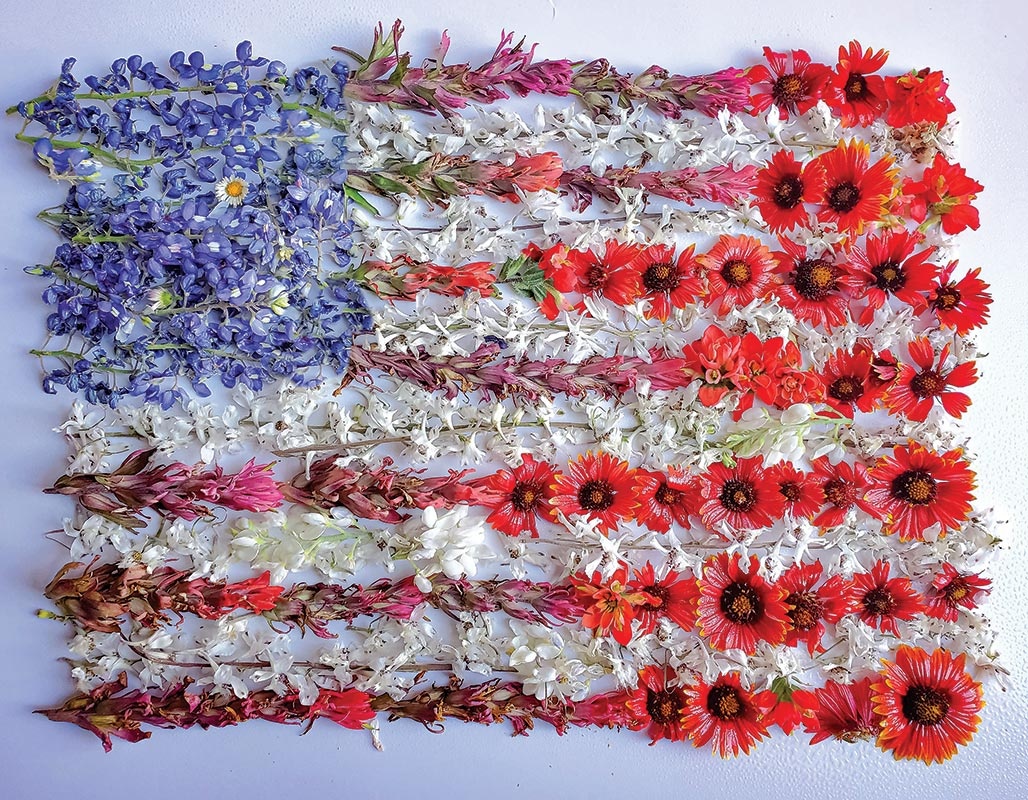
Eddie White
Bluebonnet Co-capitals of Texas
Burnet and Llano counties
Every spring visitors admire wildflowers along the Highland Lakes Bluebonnet Trail, which winds through Burnet and Llano counties in Central Texas. In 1981 the Legislature designated the pair as Bluebonnet Co-capitals of Texas.
State Flower Song
Bluebonnets
Our state flower song, Bluebonnets, has roots in Washington County. Julia D. Booth of Chappell Hill wrote lyrics for the song, which was composed by piano teacher Lora C. Crockett. On February 8, 1933, Alice Clay Routt of Chappell Hill, accompanied by Crockett on the piano, sang the tune for the Texas House. It was then adopted as the state flower song by the Legislature.
Official Bluebonnet Festival of Texas
Chappell Hill Bluebonnet Festival
The Chappell Hill Historical Society hosted its first bluebonnet festival in 1964, calling it the Bluebonnet Antique Show. In 1983 the name changed to Chappell Hill Bluebonnet Festival. In 1997 the Legislature named the event, in the town east of Brenham, as the Official Bluebonnet Festival of Texas.
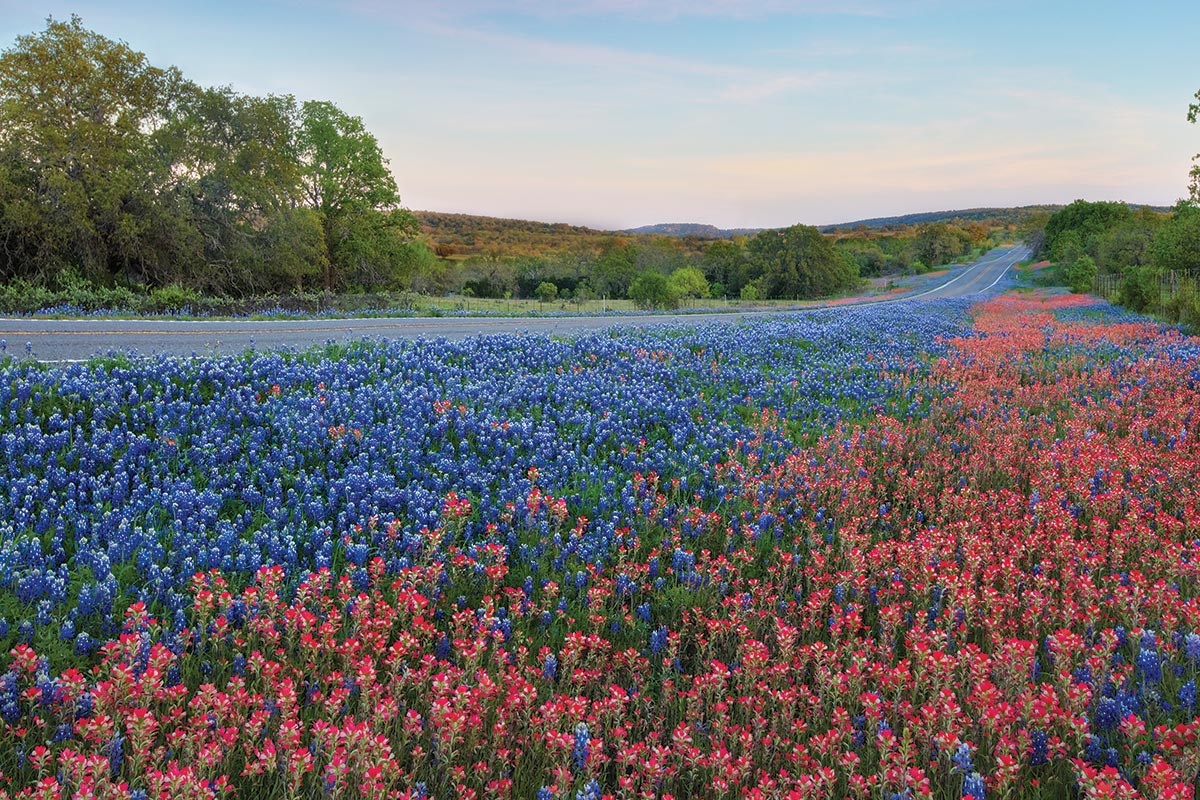
Bluebonnets and Indian paintbrush accompany travelers along a stretch of Texas 16 in Gillespie County.
Rob Greebon | Imagesfromtexas.com
Take It on the Road
Wildflower seeding brightens road trips
Since the 1930s the Texas Department of Transportation has planted native flowers and grasses along state highways. In 1934 the agency directed staff not to mow until wildflowers had set seed, a policy that still guides mowing schedules.
TxDOT’s wildflower program has expanded in both scope and vision, and the department now maintains 800,000 acres of roadside along with 80 safety rest stops and 12 travel information centers. Every year TxDOT must reseed approximately 4,800 construction projects.
Enter native plants, which require less care, provide wildlife habitat and increase biodiversity. “Every fall we sow approximately 30,000 pounds of native flower and grass seed mixes,” says Travis Jez, a TxDOT vegetation specialist. “Because monarch butterflies have become a species of major concern, we’re also planting pollinator gardens and milkweeds, such as zizotes. What’s cool is that all pollinators benefit.”
No single seed source can supply the 15 tons that TxDOT sows annually. So Jez works with six Texas companies that specialize in producing seeds for native species. TxDOT also collaborates with Texas Native Seeds of the Caesar Kleberg Wildlife Research Institute, a nonprofit program that develops commercial seed supplies of native plants for use in restoring habitats on private and public lands. The program supports six regional projects that select and grow plants endemic to their areas.
While you’re searching for wildflowers, look out for bright green carpets along Texas roadsides. Those indicate that the areas have been hydroseeded with a slurry of seeds, mulch and water. “The process is used for spreading seeds and to control erosion,” Jez explains. “The mulch also holds in water and helps the seedlings get started.”
As for the green color, “It allows applicants to see where they’ve sprayed the slurry,” Jez says.
Picture This
Mary Motz Wills’ wildflower watercolors
In April 1961 nature enthusiasts hurrahed the publication of Roadside Flowers of Texas. The classic guide written by botanist Howard S. Irwin showcases 257 wildflower paintings by Mary Motz Wills, a prolific artist and amateur botanist whose work was exhibited nationally. Her attention to the smallest details led to floral watercolors that were, as one columnist noted, “botanically accurate as well as artistically superb.”
Wills attended formal art schools and began painting flowers in 1913 while recovering from an illness in Panama, where her husband, a U.S. Army colonel, was stationed. After his death in 1925, Wills moved to Georgia and then to Abilene, where she aspired to record as many Texas flowers and plants as she could.
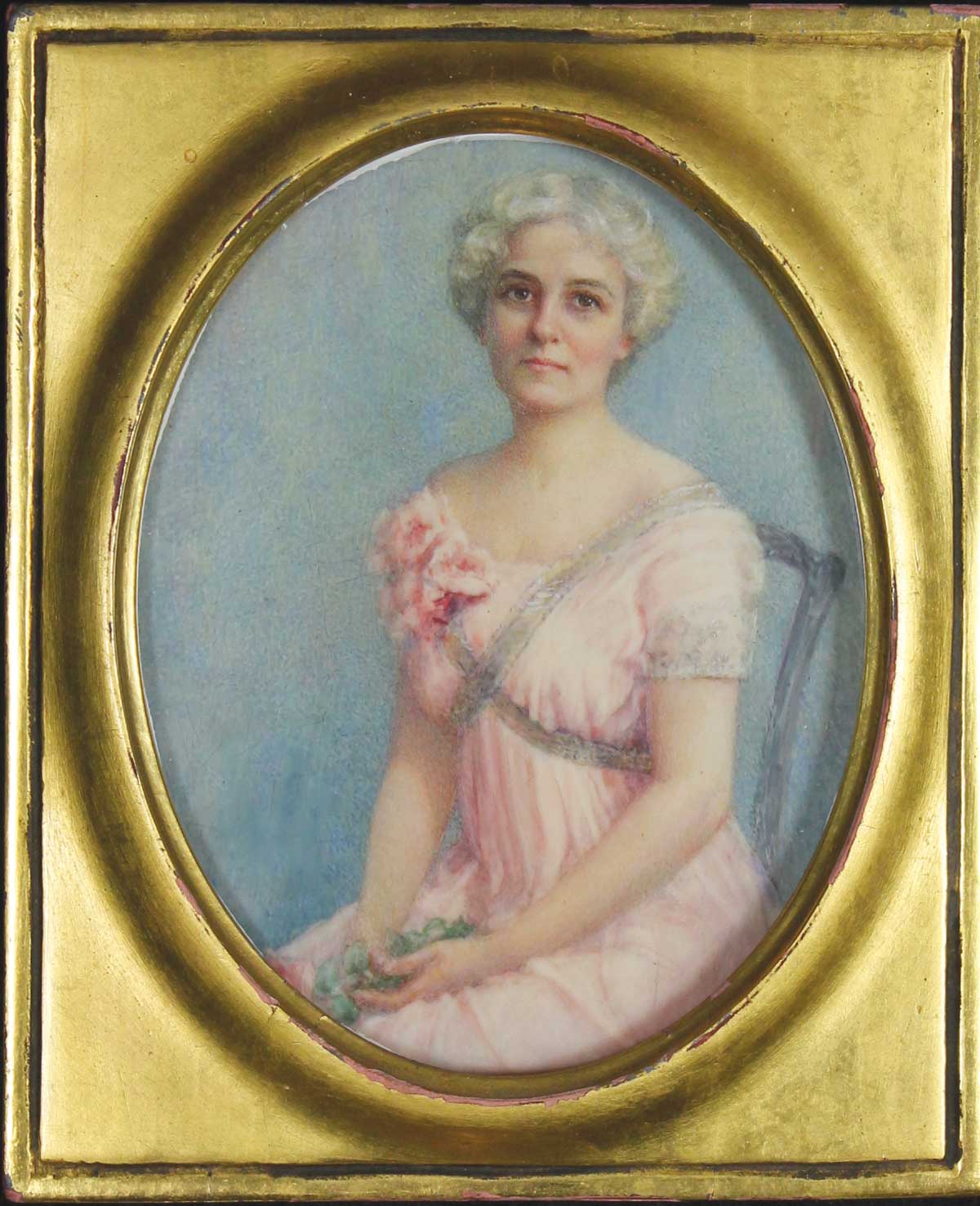
Mary Motz Wills by Elsie Motz Lowdon
Courtesy Collection of The Grace Museum
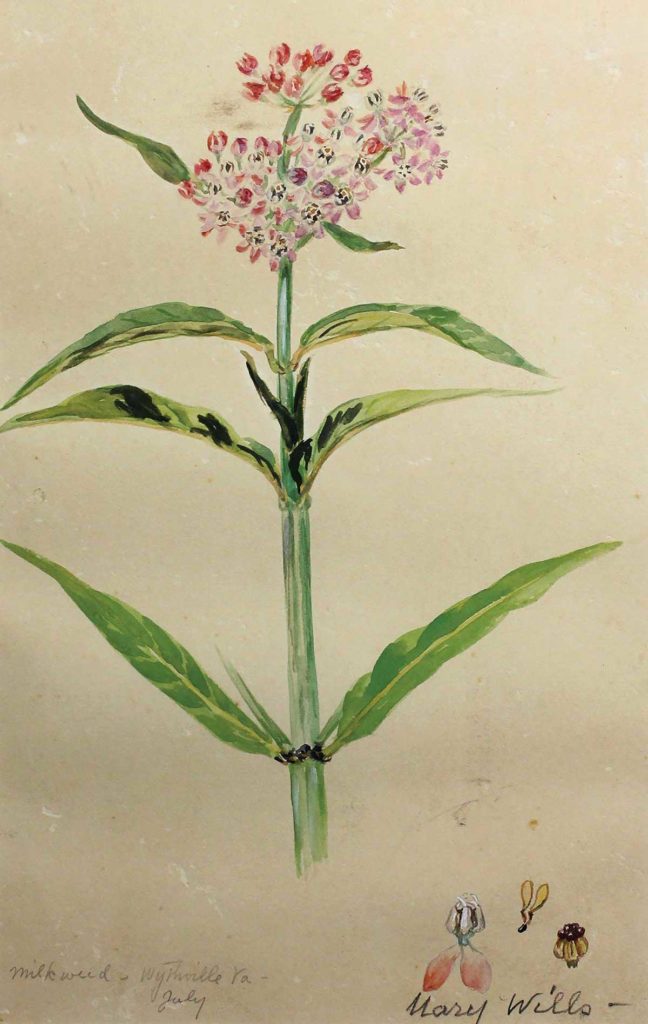
Milkweed
Courtesy Collection of The Grace Museum
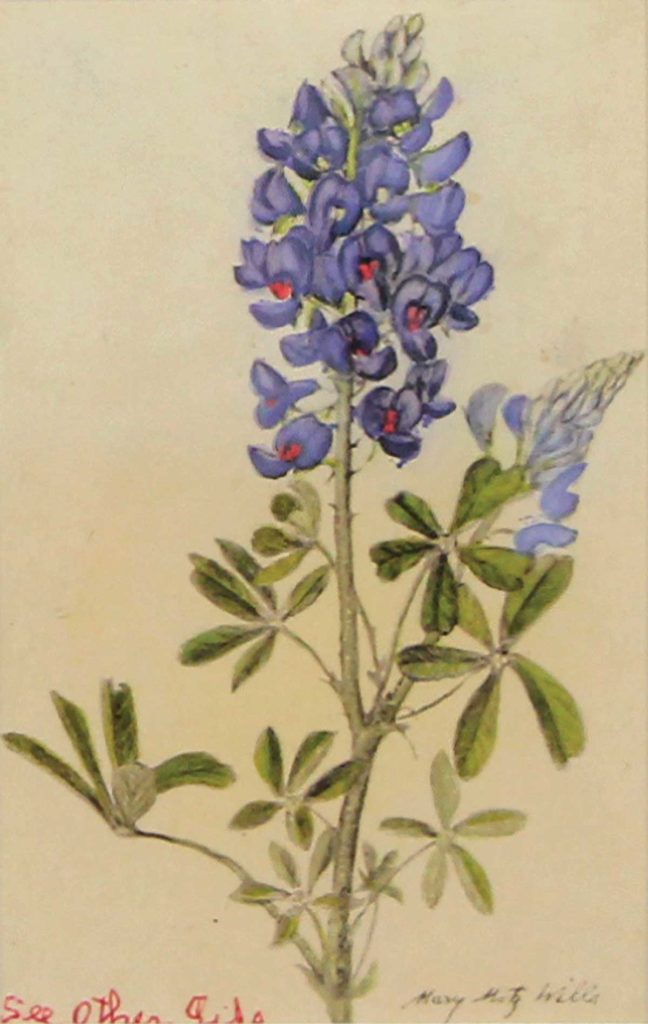
Texas bluebonnets
Courtesy Collection of The Grace Museum
At her home studio, Wills painted plants that she collected or were sent to her by friends. She sometimes woke at 4 a.m. or worked through the night to capture blooms in their most natural form. “Some flowers only bloom at night, so I stay up until I get them painted,” she told a newspaper reporter in 1958.
A stickler for accuracy, Wills often noted on her paintings the common and botanical name of plants and where they grew in the wild.
In all, Wills produced more than 2,000 Texas botanical paintings. Many of the plants that she painted “were endangered species in her day, and some have disappeared entirely since then,” writes Cecilia Steinfeldt in Art for History’s Sake: The Texas Collection of the Witte Museum.
Wills died at 86 in 1961. Today, many of her delicate watercolors are housed for safekeeping in Austin’s Dolph Briscoe Center for American History, San Antonio’s Witte Museum and Abilene’s Grace Museum.
